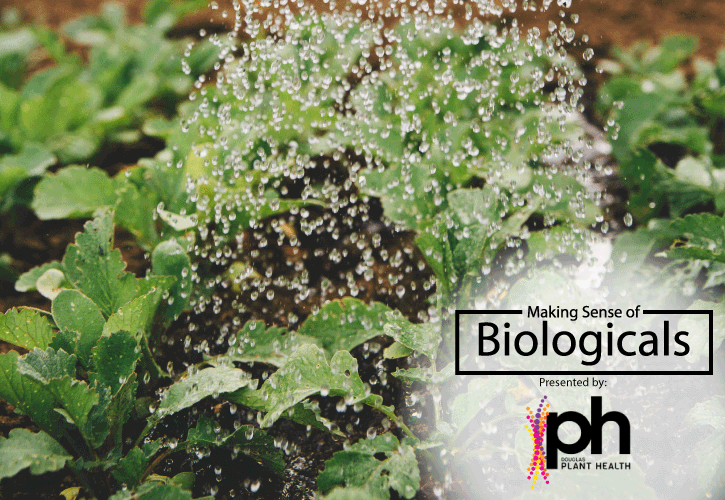Sponsored Content

The use of biological crop protection products or “biologicals” in vegetable and specialty crops is not a new idea, just one that is increasing in popularity.
The name sells itself. Biologicals represent a group of products derived from living organisms. Growers utilize environmentally friendly biologicals in combination with appropriate chemical applications to provide added protection against pests, diseases and weeds.
THE OLD WITH THE NEW
“These products have been around for a long time, before the chemical age, if you will. This is how farmers farmed,” says Dean Craine, ag market business development manager with Douglas Plant Health. “This is how growers grew crops and learned how to do it well, whether with manures or compost or whatever resource they had that they turned into something useful. We call it our grandfathers’ way of farming.”
Craine says teaming today’s technology — including precision agriculture, NDVI photography and satellite imagery — with these old and very safe biologicals makes for a successful combination. “It’s where we need to head,” he says.
GROWER CHALLENGES
The agricultural biological market has increased in importance due to various reasons. The world’s population continues to skyrocket. There are approximately 7.8 billion people in the world, up from 6.1 billion in 2000. A growing world population means more mouths to feed and increased dependence on farmers to be more innovative in trying to meet demand.
Sustainability is always an issue of importance as growers in the Southeast contend with pests, diseases, decreased market prices and imports from Mexico.
GETTING IT RIGHT
Biologicals help meet those needs, but they need to be the right situation for the right farmer in the right region. Due to an overabundance of supplies being offered, growers need to be aware of what product is right for their farming operation.
“There have been many solutions that don’t stand up over time. They all probably worked somewhere once, but when you run across products said to work everywhere, obviously, you need to be skeptical,” Craine advises. “Look for products with a track record, some history, some data and sound science. This must be the way the grower comes at it. As a grower, it can be very frustrating to sort through all the noise.”
PAIRING PRODUCTS
Industry experts classify biologicals into three categories: Biostimulants (liquid manure compost and seaweed extracts, for example), biopesticides (including Bacillus thuringiensis and mineral oil) and biofertility products (such as Rhizobium and Azotobacter bacteria).
When biofertility products get established in the soil, they can increase nutrient availability. Some of these products are synergistic, which allows for greater success when used in combination with each other.
“Those biofertilizers require the right biostimulants with them,” Craine says. “We generally define biostimulants as carbon products that feed biofertilizers and biopesticides. Biopesticides are products that have been studied carefully and can specifically target pests, whether they are diseases, insects or weeds. A lot of new work is pairing the right biostimulant with the right biofertilizer or biopesticide. This increases the biofertilizer or biopesticide’s adaptability and gives it a better shot at establishing in the soil or on a plant to do what it’s good at.
“If we’re going to replace some of the harsher chemistries, that’s how it’s going to be done, by pairing the right products to maximize their effectiveness.”









